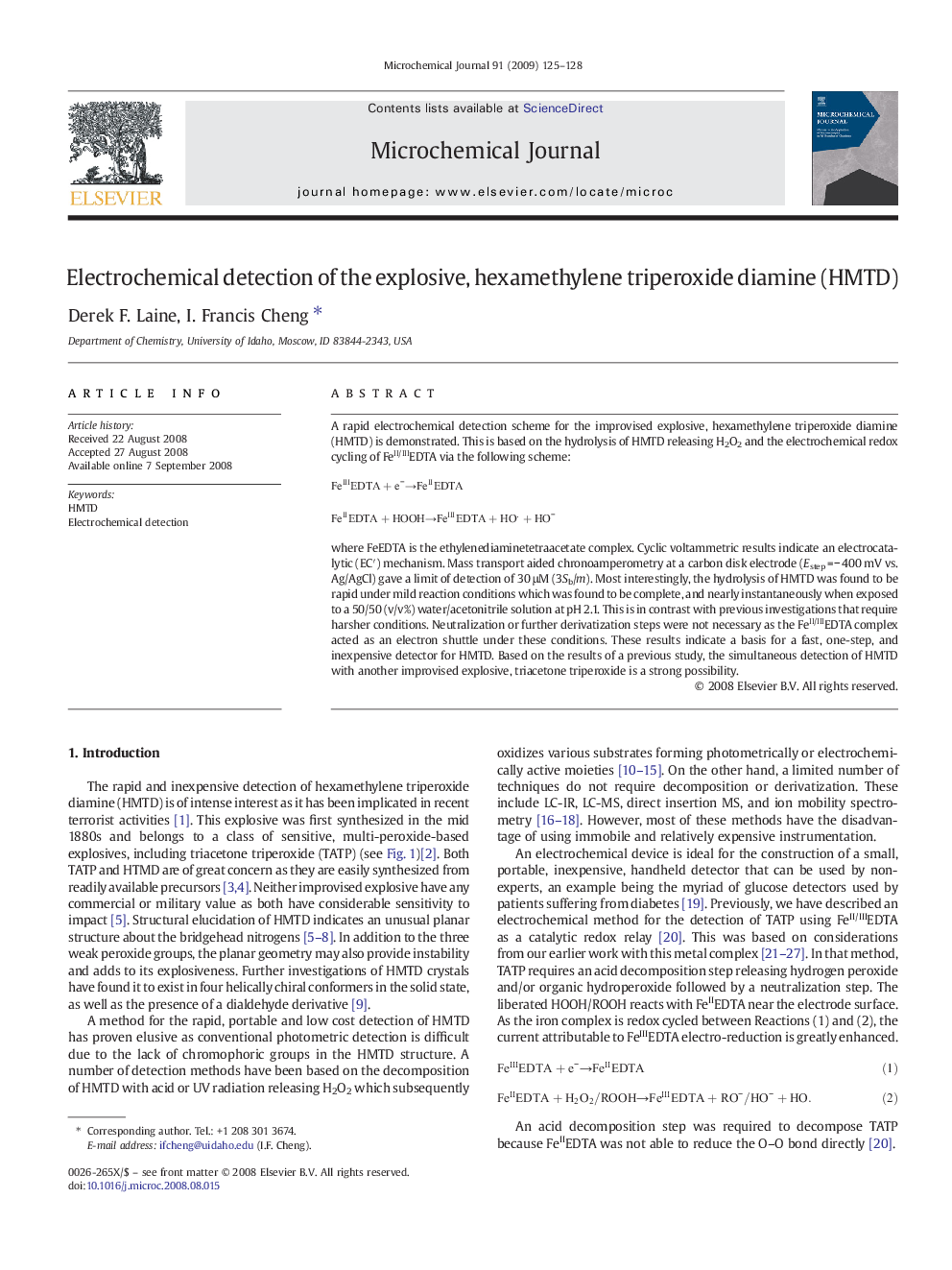| Article ID | Journal | Published Year | Pages | File Type |
|---|---|---|---|---|
| 1228214 | Microchemical Journal | 2009 | 4 Pages |
A rapid electrochemical detection scheme for the improvised explosive, hexamethylene triperoxide diamine (HMTD) is demonstrated. This is based on the hydrolysis of HMTD releasing H2O2 and the electrochemical redox cycling of FeII/IIIEDTA via the following scheme:FeIIIEDTA + e−→FeIIEDTAFeIIEDTA + HOOH→FeIIIEDTA + HO + HO−where FeEDTA is the ethylenediaminetetraacetate complex. Cyclic voltammetric results indicate an electrocatalytic (EC′) mechanism. Mass transport aided chronoamperometry at a carbon disk electrode (Estep = − 400 mV vs. Ag/AgCl) gave a limit of detection of 30 μM (3Sb/m). Most interestingly, the hydrolysis of HMTD was found to be rapid under mild reaction conditions which was found to be complete, and nearly instantaneously when exposed to a 50/50 (v/v%) water/acetonitrile solution at pH 2.1. This is in contrast with previous investigations that require harsher conditions. Neutralization or further derivatization steps were not necessary as the FeII/IIIEDTA complex acted as an electron shuttle under these conditions. These results indicate a basis for a fast, one-step, and inexpensive detector for HMTD. Based on the results of a previous study, the simultaneous detection of HMTD with another improvised explosive, triacetone triperoxide is a strong possibility.
